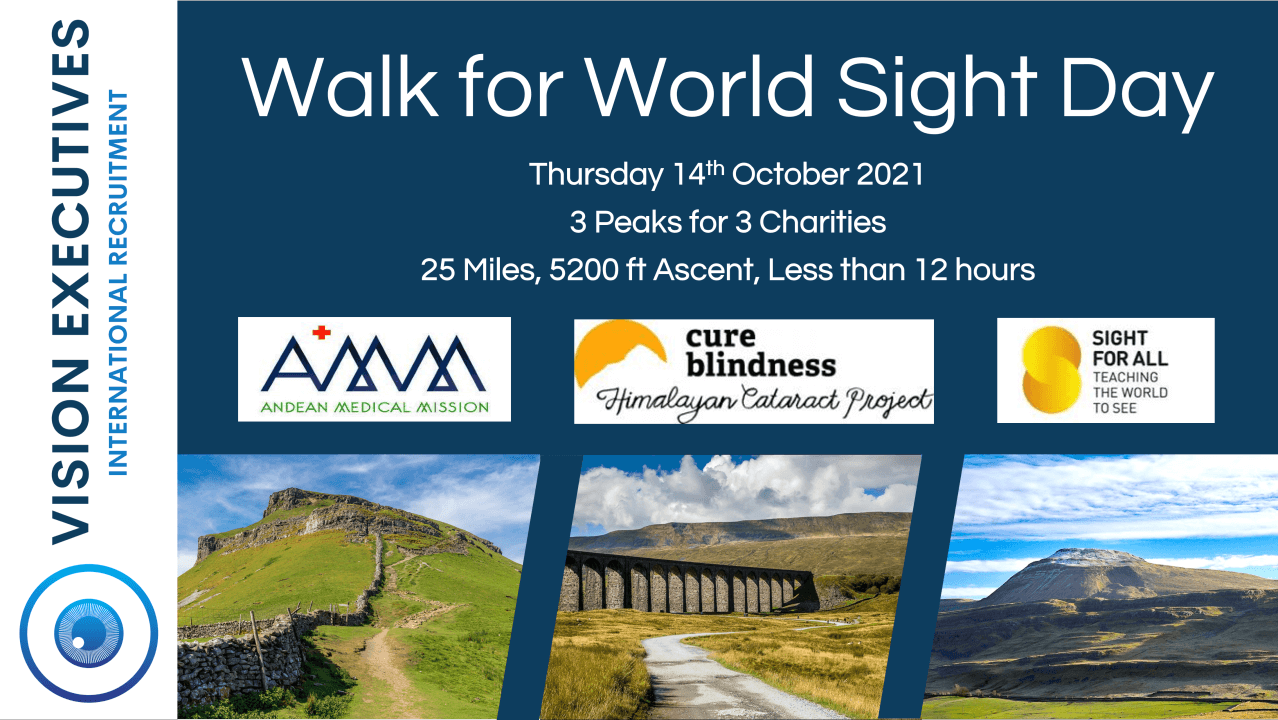
Are gene and genetic therapies the future of treatment of choice for inherited ocular diseases? Globally, 1.1 billion people suffer from vision loss, but 90 percent of this loss is preventable and treatable. And that’s why most ground-breaking research focuses on developing treatments for the 10 percent of patients who have limited or no therapeutic options.
A few months ago, I took to LinkedIn to ask my network of 5,000 eye care industry professionals which companies they thought had conducted the most innovative research in gene and genetic therapies. The response was overwhelming, with five companies taking the lead in this exciting field of study.
Here, highlight those companies – Spark Therapeutics, Biogen, GenSight Biologics, ProQR Therapeutics, and Adverum Biotechnologies – and explore their cutting-edge research.
A bright spark
Spark Therapeutics (Roche Group) is “committed to discovering, developing, and delivering gene therapies (1).” Although the company was only founded in 2013, it is using decades of prior knowledge to help develop its understanding of genetic anomalies and, therefore, hone in on therapies for specific genetic diseases.
Luxturna – a treatment for Leber congenital amaurosis (LCA) type 2 and a mutation of retinitis pigmentosa (RP), with diseased copies of RPE65 gene – was approved by the FDA in 2017 (1). The treatment provides healthy copies of the RPE65 gene; the remaining retinal cells make use of the new genetic instructions.
The treatment is commercially available in the US and rumored to cost around $850,000 for both eyes. The company hopes to be treating 30 patients per year. In Europe, Luxturna is being marketed by Novartis, increasing the market size of the treatment. After one year of treatment, patients have shown a significant improvement in their ability to navigate at lower levels of light.
“During more than 12 years of innovative research with dedicated collaborators near and far, I’ve witnessed the dramatic improvement in vision in many patients who would have otherwise lost their sight,” commented key researcher Jean Bennett, the F.M. Kirby Professor of Ophthalmology from the Perelman School of Medicine at the University of Pennsylvania, Philadelphia, USA (1).
RP has over 70 mutations and is a disease many companies are working on with their gene therapies. Although mutation-specific therapies like Luxturna can’t help all patients diagnosed with the disease, they provide a useful insight into what gene therapies can do for inherited genetic disorders.
The author of the article, James Pickering, is fundraising for sight-saving charities by doing a sponsored Three Peaks Challenge in Yorkshire, UK, on World Sight Day, October 14, 2021.
The challenge involves walking 24 miles up three mountains, with an ascent of 5200ft, in under 12 hours. Pickering asked his network of eyecare professionals to nominate worthy charitable foundations and chose Andean Medical Mission, Himalayan Cataract Project, and Sight For All.
Read more about the challenge here and – most importantly – donate here.

Reaching for the stars
In 2019, Biogen acquired Nightstar Therapeutics – a leading clinical-stage gene therapy company with a focus on one-off treatments for patients with rare inherited retinal diseases.
The acquisition of Nightstar came with two mid-to-late-stage gene therapies for rare retinal diseases with no approved treatment: choroideremia and X-linked RP.
Timrepigene emparvovec (BIIB111) has been developed to tackle choroideremia – progressive vision loss caused by an abnormal gene on the X chromosome. Injection of Timrepigene emparvovec into the back of the eye enables cells to produce the missing REP-1 protein, potentially slowing down or reversing the loss of vision (2).
The second treatment, otoretigene toliparvovec (BIIB112), uses a low-dose subretinal injection to target X-linked RP, which is caused by mutations in the RPGR gene, with subsequent loss of photoreceptors and progressive vision loss (3, 4).
Unfortunately, the BIIB112 gene therapy did not show any significant improvement in a mid-to-late-stage study. However, there were signs of an improvement of visual sharpness in low light and in central retinal sensitivity (4).
And in further negative news, Biogen announced in June 2021 that BIIB111 had not met its one-year target in correcting visual acuity (5). The company is analyzing data for both treatments to decide on the next steps in its gene therapy program.
Sights set on LHON, AMD, and RP
GenSight Biologics is currently focusing on gene therapies for Leber hereditary optic neuropathy (LHON), geographic atrophy in dry AMD, and retinitis pigmentosa.
Its leading therapy is LUMEVOQ (GS010) for LHON – a rare genetic disease found primarily in teenagers and young adults, which affects the mitochondria, severe and irreversible vision loss. According to GenSight’s website, the treatment involves “leveraging a mitochondrial targeting sequence proprietary technology platform” and addresses the defects in mitochondria with an AAV vector (6). LUMEVOQ has been submitted for marketing approval in Europe – an exciting advancement for inherited retinal diseases.
Recently, I wrote a post on GenSight’s work on RP (7), which made the news by partially restoring the vision of a patient in the phase 1/2 clinical trial of GS030 (8). The patient in question had suffered from the disease for 40 years and could originally only respond to amber light; now, they can identify the white lines on crosswalks and detect household items whilst wearing goggles that detect changes in light intensity. As Botond Roska, Group Leader of Central Visual Circuits and Human Retinal Circuit Groups at the Institute of Molecular and Clinical Ophthalmology at the University of Basel in Switzerland, commented, “The findings provide proof-of-concept that using optogenetic therapy to partially restore vision is possible (9).”

The long haul
Founded in 2006, Adverum Biotechnologies is a clinical-stage gene therapy company that targets unmet medical needs in ocular and rare diseases. The company’s gene therapy products are designed to provide a longer lasting treatment of a therapeutic protein in AMD and DME.
ADVM-022 uses an AAV vector to deliver the coding sequence for aflibercept. Given as a single intravitreal injection, ADVM-022 aims to offer long-term efficacy while reducing the burden of frequent injections for AMD and DME patients – thus tackling patient compliance (14).
ADVM-022 for wet AMD, DME, and RP are in or near the end of phase 2 clinical trials. However, a recent toxicity scare with ADVM-002 for DME prompted questions on the necessity for a one-time treatment, when a multiple injection treatment exists (15).
RNA professionals
Finally, we shift away from true gene therapies to another innovative niche: RNA therapies. And when it comes to RNA therapies for people with inherited retinal diseases, ProQR Therapeutics is at the forefront of the field. The company uses antisense oligonucleotides in its RNA gene therapies, which are specifically designed to suppress expression of rogue RNA and thus prevent mutant protein availability.
ProQR has several RNA therapy clinical trials running, but Sepofarsen is its lead program. Sepofarsen addresses a faulty CEP290 gene in patients diagnosed with LCA10 (10). The treatment was apparently “well-tolerated with manageable safety findings” in a phase 1/2 clinical trial (11), and it is currently in a phase 2/3 trial. “This marks an important milestone for ProQR, as well as for the LCA10 and broader inherited retinal disease community,” said Aniz Girach, Chief Medical Officer of ProQR (12).
Meanwhile, the company’s QR-421a RNA therapy – currently in a phase 1/2 clinical trial – aims to prevent vision loss in people with Usher syndrome and RP with mutations in exon 13 of the USH2A gene (13).
Both programs highlight the potential of innovative RNA-based therapies in the treatment of inherited retinal diseases; success may spur other companies to investigate this novel modality.
A rare treat(ment)?
Developing such therapies is extremely challenging – and gaining regulatory approvals is no walk in the park. Moreover, sourcing patients with rare diseases is inherently difficult. All of these aspects feed into a final giant hurdle: cost. It almost goes without saying that treatment is inaccessible to those without government support or the very best medical insurance.
And that raises a question: in the future, will gene and genetic therapies always be limited to treating diseases with no alternative treatment regimens?
Whatever the answer, it will be interesting to watch how these five companies (and others like them) continue to innovate and succeed. After all, without their efforts, patients with rare inherited retinal diseases would be left with very little hope.
Find out more about Vision Executives
www.linkedin.com/company/vision-executives
References
- Spark Therapeutics, “FDA approves Spark Therapeutics’ LUXTURNA (voretigene neparvovec-rzyl), a one-time gene therapy for patients with confirmed biallelic RPE65 mutation-associated retinal dystrophy” (2017). Available at: https://bit.ly/2V34WL9.
- Clinical Trials, “Efficacy and safety of BIIB111 for treatment of choroideremia (STAR)” (2020). Available at: https://bit.ly/3o4J5Pm.
- Biogen, “Biogen announces topline results from Phase 2/3 gene therapy study for XLRP” (2021). Available at: https://bit.ly/3u8gxWk.
- Clinical Trials, “A clinical trial of retinal gene therapy for X-linked retinitis pigmentose using BIIB112 (XIRUIS)” (2021). Available at: https://bit.ly/2XPpCYc.
- Biogen, “Biogen announces topline results from Phase 3 gene therapy study in choroideremia” (2021). Available at: https://bit.ly/3o7PXLY.
- GenSight Biologics, “GenSight Biologics announces approval of the LUMEVOQ® cohort temporary authorization for use (ATUc) in France” (2021). Available at: https://bit.ly/39x0FD9.
- Vision Executives, “Positive GenSight news for retinitis pigmentosa patients” (2021). Available at: https://bit.ly/3xnbaTV.
- Clinical Trials, “Dose-escalation study to evaluate the safety and tolerability of GS030 in subjects with retinitis pigmentosa (PIONEER)” (2021). Available at: https://bit.ly/3lZuwdz.
- University of Basel, “Gene therapy restores partial vision to a blind patient” (2021). Available at: https://bit.ly/3zxRvRy.
- Clinical Trials, “A study to evaluate efficacy, safety, tolerability and exposure after a repeat-dose of Sepofarsen (QR-110) in LCA10 (ILLUMINATE)” (2021). Available at: https://bit.ly/2WbLqwA.
- ProQR, “Sepofarsen for CEP290 mediated Leber congenical amaurosis.” Available at: https://bit.ly/3i4jIto.
- ProQR, “ProQR completes enrollment of its pivotal trial of Sepfarsen for the treatment of LCA10.” Available at: https://bit.ly/3CGabR4.
- Clinical Trials, “Study to evaluate safety and tolerability of QR-421a in subjects with RP due to mutations in Exon 13 of the USH2A gene (Stellar)” (2021). Available at: https://bit.ly/3lTqfs2.
- Clinical Trials, “ADVM-022 intravitreal gene therapy for wet AMD (OPTIC)” (2020). Available at: https://bit.ly/3o5nhDw.
- Adverum, “Adverum provides update on ADVM-022 and the INFINITY trial in patients with diabetic macular edema” (2021). Available at: https://bit.ly/39AswTa.
